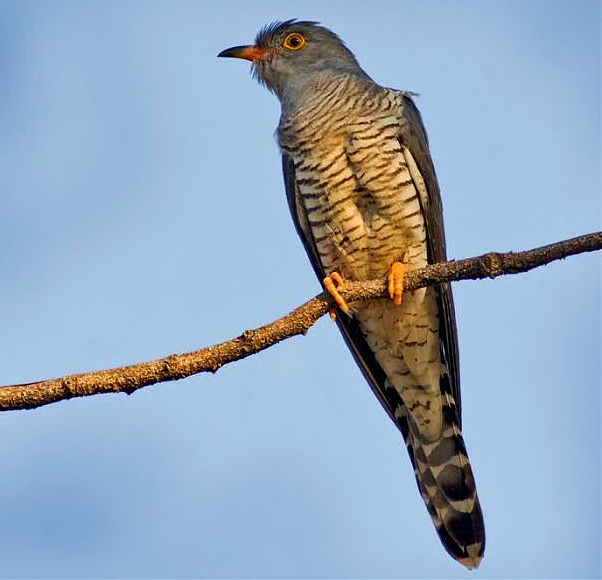 |
| Photo by Nancy Bell (Mango Verde) |
Common name:
African cuckoo (en); cuco-africano (pt); coucou africain (fr); cuco barbiblanco (es); Afrikanerkuckuck (de)
Taxonomy:
Order Cuculiformes
Family Cuculidae
Range:
This species is found in most of sub-Saharan Africa, only being absent from parts of D.R. Congo, Somalia, southern Namibia and south-western South Africa.
Size:
These birds are 30-33 cm long and weigh 100-110 g.
Habitat:
African cuckoos are mostly found in dry savannas, but also in dry scrublands and grasslands. they tend to avoid evergreen forests.
Diet:
They mainly feed on caterpillars, collected amongst the foliage of trees and shrubs, but will also take beetles, grasshoppers, termites, ant alates and even the eggs and nestlings of other birds.
Breeding:
African cuckoos breed in September-December. They are brood parasites, laying their eggs in the nests of other birds, namely the fork-tailed drongo Dicrurus adsimilis. Often the male distracts the host while the female flies into its nest, removes any existing eggs and lays 1 of her own. The egg is incubated by the host for 11-17 days. The chicks removes any existing eggs from the nest and is fed by the host until it fledges, about 23 days after hatching.
Conservation:
IUCN status – LC (Least Concern)
This species has an extremely large breeding range and is reported to be fairly common throughout its range, especially within protected areas. The population is suspected to be stable in the absence of evidence for any declines or substantial threats.







